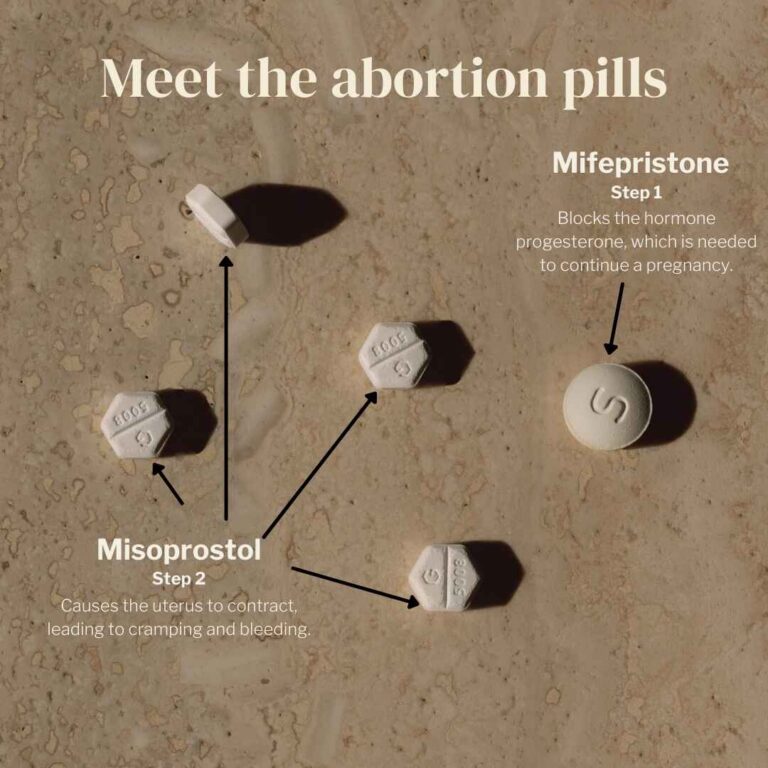Book Appointment Now

What to Expect During a Medical Abortion: A Day-by-Day Timeline
Medical abortion, also known as the abortion pill, is a safe, private, and non-surgical way to end an early pregnancy. As we discussed in How Medical Abortion Pills Work: A Complete Guide to Safe Home Use, this process involves two main medications: mifepristone and misoprostol, taken 24 to 48 hours apart. While the process is medically straightforward, many people want to know exactly what to expect each day, especially when they’re navigating a whirlwind of emotions, physical changes, and the anxiety of the unknown.
So today, I have prepared this day-by-day experience of a medical abortion based on clinical guidance, real patient stories, and expert tips to help you feel informed, prepared, and supported. Because no two experiences are exactly the same, I have also highlighted variations you might encounter, including emotional changes and aftercare concerns.
Day 1: Taking Mifepristone
Your medical abortion journey begins with a 200mg pill of mifepristone. This is usually taken at a clinic, though in some places it’s provided for home use via telemedicine.
What it does: Mifepristone blocks the hormone progesterone, which is essential for pregnancy growth. Once blocked, the uterine lining starts to break down.
What you may feel: Most people feel little to nothing after taking it. Some light spotting or mild cramping is possible. If vomiting occurs within 1-2 hours, a repeat dose may be necessary.
What to do: Go about your day normally. Avoid alcohol and aspirin. Clinics typically provide misoprostol and detailed instructions for the next steps.
Mifepristone is a drug that blocks a hormone called progesterone that is needed for a pregnancy to continue. Mifepristone, when used together with another medicine called misoprostol, is used to end an intrauterine pregnancy through ten weeks gestation (70 days or less since the first day of the last menstrual period) – US Food and Drug Administration
Day 2: Taking Misoprostol & Passing the Pregnancy
Timing matters: 24 to 48 hours after mifepristone, you take misoprostol. This medicine causes your uterus to contract and expel the pregnancy tissue.
How to take it: You might take it orally (between the cheek and gums or under the tongue) or insert it vaginally. Always follow your provider’s instructions.
What you may feel:
-
Cramps: These start within 1–4 hours and can be very intense, often likened to labor contractions or a severe period.
-
Bleeding: Heavy bleeding with clots (sometimes lemon-sized) is common. Most of the pregnancy tissue passes within 2–12 hours.
-
Side effects: Nausea, vomiting, diarrhea, fever, and chills are all normal but should pass within 24 hours.
“I had severe cramps and chills for a couple of hours, and then I felt a big release. I looked down and saw the sac. It was surreal but relieving.”
“The pain peaked around hour 4, but after that, everything started calming down.”
Tips: Stay near a bathroom, wear heavy pads, not tampons, use a heating pad for cramps, and take ibuprofen, not aspirin. Keep hydrated and have a support person if possible.
Days 3–5: Bleeding, Recovery & Aftermath
After the tissue passes, bleeding usually continues for a few days but begins to taper off. You might still pass small clots, and occasional cramping can persist.
What you may feel:
-
Moderate bleeding, like a period
-
Sore or tired, emotionally drained
-
Relief, sadness, or both, all valid
Variations: Some people expel tissue later, even on day 4 or 5. If you haven’t bled within 24 hours of misoprostol, contact your provider.
On that note, monitor bleeding. If you’re soaking through more than 2 maxi pads per hour for 2+ hours, that’s a red flag. Call your doctor.
Week 1: Aftercare, Monitoring & Emotional Check-In
By the end of the first week, bleeding often becomes light spotting. Many clinics schedule a follow-up via phone or in person to confirm the abortion is complete. Some also provide a low-sensitivity pregnancy test for use at home after 2 weeks.
What to expect:
-
Bleeding becomes lighter each day
-
Mild cramps may linger
-
Hormones begin to shift
Emotionally, you might feel relief, sadness, numbness, or regret. All are valid at this time. Reach out to support groups or professional counseling if you need a safe space to process.
Red flags:
-
No bleeding at all
-
Fever over 100.4°F
-
Foul-smelling discharge
-
Severe or prolonged pain
Weeks 2–4: Return to Baseline
Most people stop bleeding within 2 weeks, though spotting may continue for up to 4–8 weeks. Your next period typically returns within 4–8 weeks.
Fertility: You can get pregnant almost immediately after a medical abortion, so discuss contraception options with your provider. IUDs, pills, or implants can usually be started right away.
Physical recovery: You should feel physically normal within a week or two. Energy levels return. Sex, tampons, and swimming can resume once the bleeding has stopped.
Emotional recovery: This is different for everyone; some feel empowered, others feel vulnerable. That’s okay, we all feel and deal with life differently.
One patient once shared, “I thought I’d feel awful, but I actually felt a strange kind of peace. Like I had control over my body again.”
Know When to Get Help
Always call your provider if you experience:
-
Soaking 2 pads/hour for 2+ hours
-
Fainting, severe pain, or fever
-
No bleeding after misoprostol
-
Symptoms lasting beyond 3 weeks
Key Takeaways
-
Medical abortion is safe and effective up to 10 weeks, as we discuss more on common medical abortion myths in 5 Dangerous Myths About Abortion Pills Debunked by Experts
-
Day 2 is usually the most physically intense
-
Recovery spans 1–3 weeks, depending on your body
-
Emotional experiences vary widely; it is the support that matters
-
Follow-up is necessary to confirm completion
A medical abortion ends an early pregnancy by using a combination of medicines. It’s a safe procedure that works by stopping the growth of the pregnancy and then causing the uterine lining to shed. The mifepristone and misoprostol regimen can be used up through 10 weeks for an at-home abortion – Cleveland Clinic
This process can feel daunting, but you’re not alone. Equip yourself with knowledge, prepare for what’s ahead, and lean on support systems. It can be anyone you trust: a friend, a clinic counselor, or an online support group. Talking through your experience can be healing.
Keep in mind that every experience is unique, but the right information can empower you to face it with clarity and confidence. Do not be shy to contact your provider for any questions.
And lastly, if you are experiencing a medical emergency, please contact a licensed provider or emergency services immediately.



